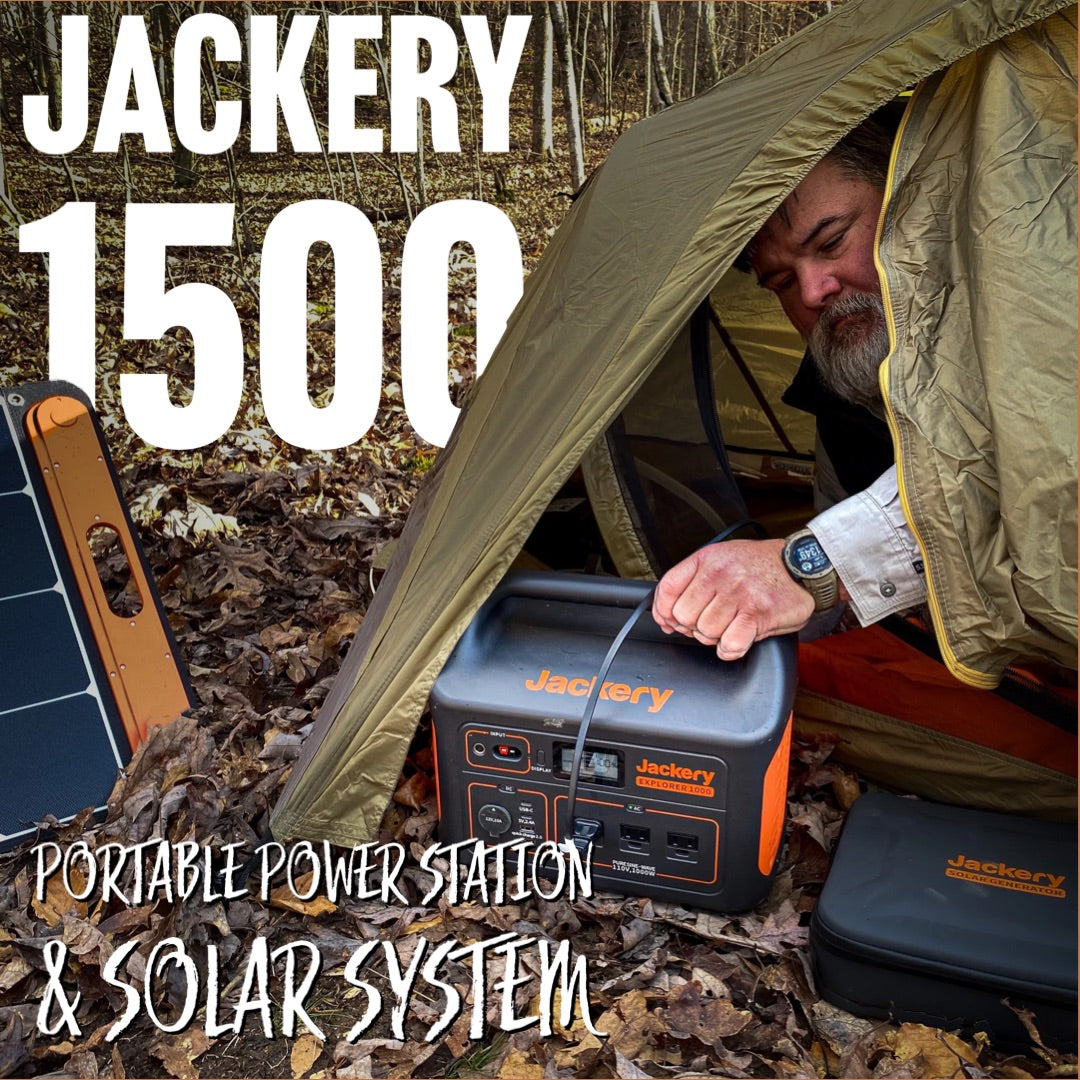
Jackery 1500 - Portable Power Station and Solar System
Video with some highlights. Read on below the video for further and more detailed info.
One of the most beneficial things to living a modern and comfortable life is electricity. Recognizing this is easy to do when we have ice storms, floods, tornados, hurricanes, and it it forces us to go "dark" for a while. Family, friends, neighbors, and others will complain about such times, and there are simple ways to bridge the gap between ordinary life and life without electricity. Backup power, both big and small, is one way of doing that.
Safeguarding yourself and your family with backup power supplies for these inevitable possibilities is a must. I do not think there is a one-stop-shop for a power backup unless you invest several thousand dollars on a generator to run your whole home. You can also invest in solar-powered panels that can provide battery backup for the entire house as well. In this piece, I want to focus our attention on mobile power supplies that we can move about if needed that provide power on varying levels.
Alkaline batteries - go ahead and forego these unless it simply all you can afford to purchase. When stored at room temperature, alkaline batteries have a shelf life of only 5-10 years. They may be a quick and easy option because of the money, but storing batteries is the worst choice.
Lithium batteries – these are a better choice if you must get disposable batteries. Their shelf-life is in the 15–20-year neighborhood when stored at room temperature. They are a bit more costly, but they are more economical choice for disposable batteries since they last nearly twice as long.
Lithium-Ion batteries are like lithium batteries, but they have secondary cell construction, enabling them to be recharged numerous times. They make great choices for electronics like smartphones, tablets, and even small laptop computers. You will need to know what power requirements your device and buy a comparable power bank to go along with it. Read further info below on "assessing your needs" for that information.
Nickel Metal Hydride (aka NiMH) is a great rechargeable option to have in your preparedness supplies for any item with a high amount of energy consumption. Items like flashlights are a standard tool that is needed in preparedness supplies that runs on batteries. You can get a charging stand and extra batteries that you keep in frequented location, and you change out the batteries in the light regularly. I always keep a flashlight on me, so this is easy to do. Whenever the light is getting low, get the extra set and put the ones needing a charge in the cradle, so I always have a batch ready to go. The problem here is that they discharge about 1% a day if in low energy or stand-by device. That is why they need to a good charging stand at the ready.
We want to know how these large rechargeable battery supplies work and how best not to break the bank when getting one. Fortunately, this was hard to do only a couple of years ago. Still, this technology is rapidly advancing, and I have had great success with two variations that can supply us with the information we need.
Jackery USA makes my latest addition to my backup power supplies, and I genuinely believe they are the way to go at the current time. I obtained a Jackery 1500, 1000 and a smaller 240. I have been using these units in various capacities for over a year now and highly recommend them. The Jackery 1500 can do nearly what other portable power stations can do for half the price and 75% less weight. This makes it a mobile unit easy to move around inside the house or on the move if necessary. This unit can power a regular-sized refrigerator for about 18 hours, although the manufacturer does not recommend it. I have used it to do so. I have also used it to power a mini fridge for 2.5 days. You can recharge this unit with an AC adapter in only 7 hours. The included 12V car adaptor in 14 hours and the extra purchase of 100W solar panels in 8 hours with full sunlight.
Assessing your needs
This is where portable power marketing will get you in trouble quick. You must understand that powering a unit, let us use a cellphone as an example, is a product of several things. The milliampere (mAh) measures how much electrical charge a portable charging unit can hold. The battery inside the cellphone will have a similar rating. That does not mean that if you have a unit that contains four times the mAh that your phone holds, you will get four charges. The watt-hour (Wh) is another unit we must understand. The voltage difference between the phone and the charging unit means it will not charge a total of four charges because the power bank will reduce Wh of power due to lower voltage. In contrast, the phone itself can receive energy at higher Wh due to its acceptance of AC power supply.
My most sincere desire is that you have gotten some important information in the simplest of terms. Electronics is something that easy to get lost in the technical aspects of rather quickly. I am a big fan of electronics and their role in our lives. I am also a fan of learning how to live without them when and where we can. These batteries, power banks, and other items will help bridge the gap in uncertain times of disaster so we can bring some comfort, perhaps life-saving medical needs, whenever the power goes out.
Editors Note: Portions of this blog piece appeared last year in an American Survival Guide article


Leave a comment